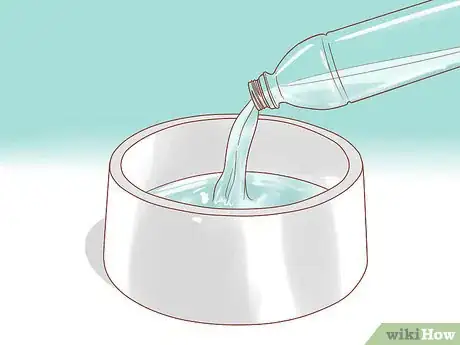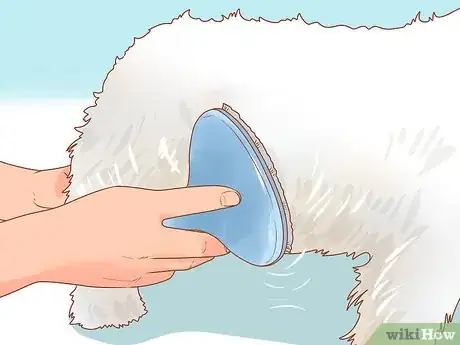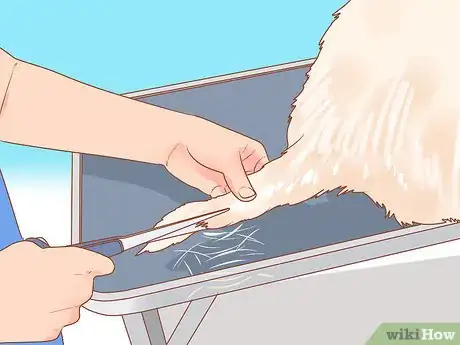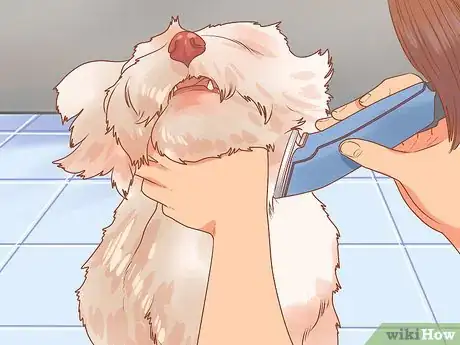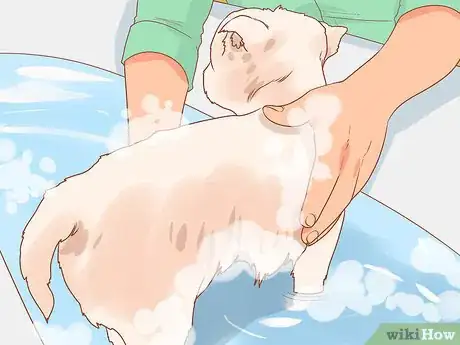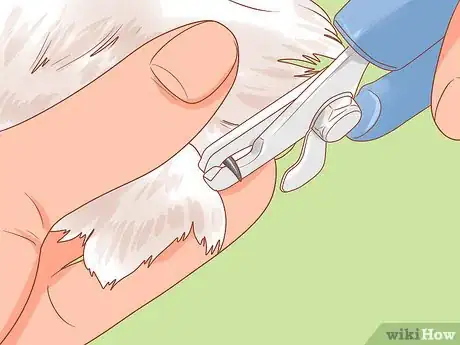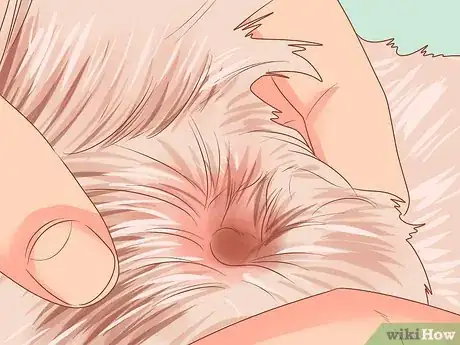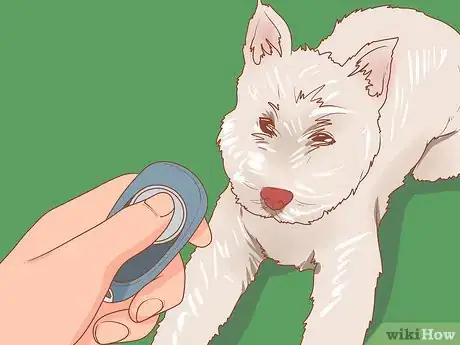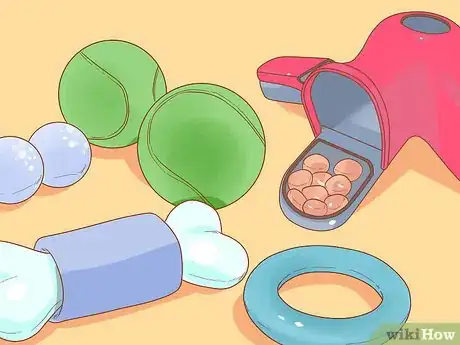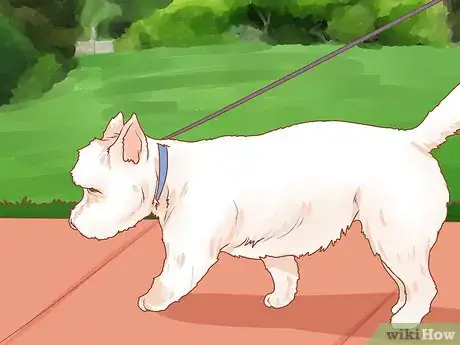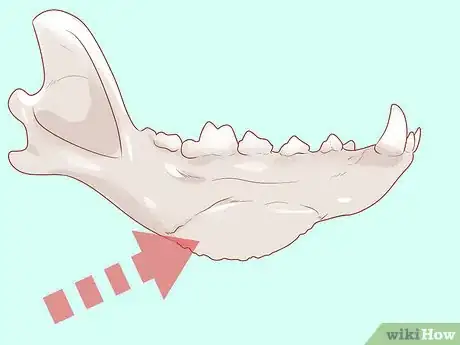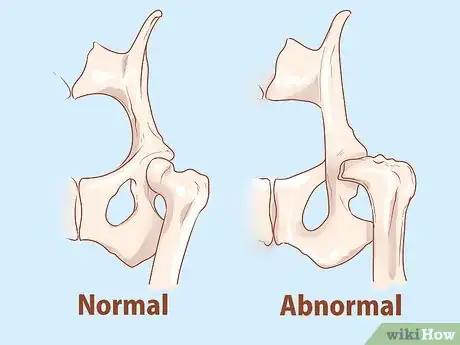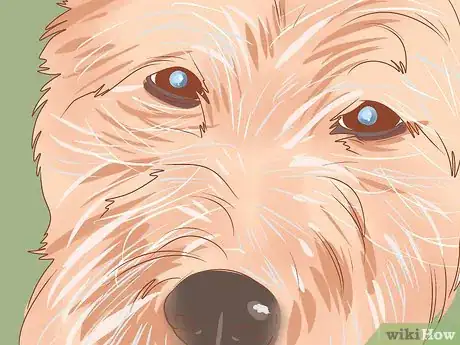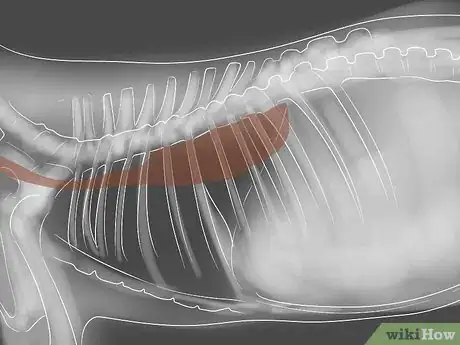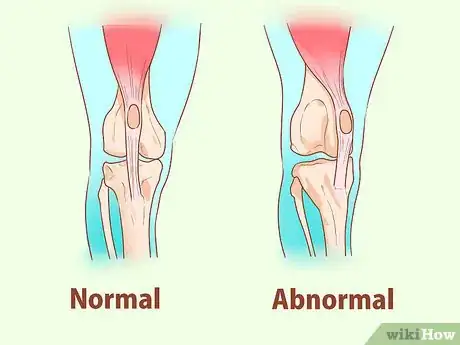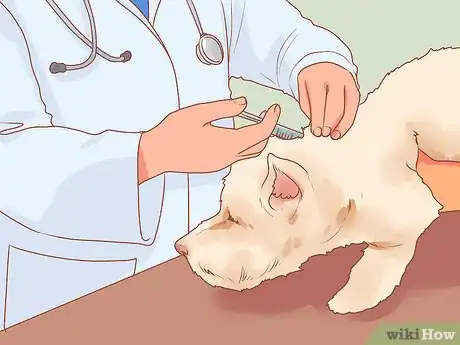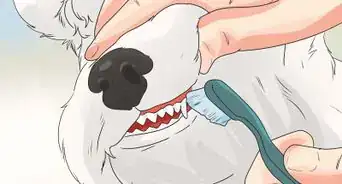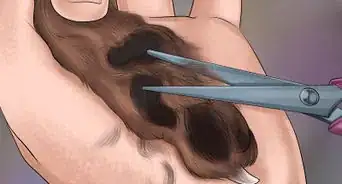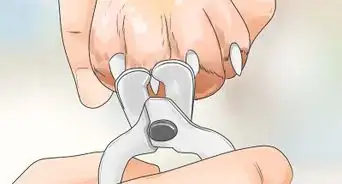This article was co-authored by Pippa Elliott, MRCVS. Dr. Elliott, BVMS, MRCVS is a veterinarian with over 30 years of experience in veterinary surgery and companion animal practice. She graduated from the University of Glasgow in 1987 with a degree in veterinary medicine and surgery. She has worked at the same animal clinic in her hometown for over 20 years.
There are 11 references cited in this article, which can be found at the bottom of the page.
wikiHow marks an article as reader-approved once it receives enough positive feedback. In this case, 90% of readers who voted found the article helpful, earning it our reader-approved status.
This article has been viewed 44,071 times.
West Highland Terriers, also known as “Westies”, originated in Scotland. The white Westie is an attractive and social dog. They are well-suited to indoor life, and generally good with kids and other pets.[1] To care for a West Highland White Terrier, ensure it is fed properly, and that its coat, ears, teeth, and nails are kept neat and clean. These intelligent dogs are easy to train and socialize, given enough toys and moderate activity. Like any animal, Westies are prone to certain health problems that you need to keep an eye out for. Take good care of your West Highland White Terrier and you can expect to enjoy its company for 12 years or more.[2]
Steps
Feeding Your West Highland White Terrier
-
1Offer clean, fresh water at all times. Make sure your Westie's bowl is always full of water, especially during the warmer months of summer.[3]
- You can provide filtered water if you live somewhere where the tap water isn't very good. Don't give your dog distilled water, as this can lead to mineral deficiencies.
- Don't use a plastic bowl, as these can become a breeding ground for germs.[4] A glass, metal, or ceramic bowl is best.
-
2Feed your dog two meals a day. High-quality dry or wet food is best for West Highland Terriers. They should be fed twice a day, once in the morning and once in the evening.[5]
- Follow the feeding directions on the food package as a starting point, and then increase or decrease the amount of food you give to your dog if he or she loses or gains weight.
- Avoid kibble containing wheat, corn, and beef. Westies can often be allergic to these ingredients.
- Westies love chicken, fish, and lamb. These meats are good for this breed of dog, so look for a kibble containing one or more of them.[6]
Advertisement -
3Consider supplements. Some West Highland White Terrier owners choose to feed their dogs additional supplements to fortify their health. Two popular choices include:
- Omega 3 fish oil. Available in gel caplets, fish oil is good for your Westie's skin and immune system.
- Brewers yeast, available in special formulations for dogs, are a good source of vitamins and minerals. Brewers yeast also promotes a healthy coat.
- Talk to your vet before adding new supplements or significantly changing your dog's diet.
Grooming Your Westie
-
1Brush you Westie daily. Daily brushing helps keep a Westie's coat neat and clean. This is especially important for white Westies, as their coats make dirt and debris more obvious.[7]
- Use a firm-bristled brush with short, closely spaced bristles. A slicker brush also works well. Both should be available at most pet stores.[8]
- In addition to keeping the dog's coat clean, regular brushing is also good for its circulation.
- Regular brushing also reduces shedding.
-
2Strip the dog's fur. Stripping refers to the process of plucking old, dead hair from the dog's coat. It is the traditional way to keep the Westie's coat neat and clean.[9]
-
3Have your Westie's coat clipped regularly. Another way to keep the dog's coat neat is through regular clipping of the dog's coat.[12] Bring your dog to the groomer a clip regularly.
- Clipping every four to six weeks will keep your West Highland White Terrier looking its best.
-
4Only bathe your Westie occasionally. If brushed consistently, Westies don't require frequent bathing. They have naturally dry coats which can be damaged by over bathing.[13]
- Bathe your Westie if gets into mud, excrement, or similar filthy substances. Otherwise, baths a few times a year will be sufficient.
- You should, however, wipe your Westie down frequently. When the dog comes inside from playing, feel free to wipe it down with a dry or lightly damp towel to remove dirt and debris clinging to the coat.[14] This is especially important for keeping white Westies looking their best.
- When you do bathe your dog, never use human shampoo. It has the wrong pH for a dog and can be bad for the coat and skin. Purchase dog shampoo at your local pet store.
-
5Trim your Westie's nails regularly. Nail care is important for Westies, as their nails are strong and fast growing.[15] Keep an eye on the nails and cut them whenever they begin to get long.
- Westie's nails can split and crack if not kept trim and neat.
- Use a nail trimmer or grinder made for dogs. Don't use human nail clippers.
- Be careful careful not to cut their nails the quick. Cutting nails too short can be painful for the dog and cause bleeding. If you aren't comfortable cutting your dog's nails, have a groomer do it.
-
6Brush the dog's teeth. Like a person, a dog needs its teeth brushed to avoid decay, remove plaque, and prevent gum disease.[16]
- Brush your Westie's teeth daily, if possible.
- Use a dog toothbrush and toothpaste, available at any pet store. Never use human toothpaste, which can make your dog very sick.
-
7Check your Westie's ears. A West Highland Terrier needs its ears checked once a week. Look for wax buildup and redness.[17] As necessary, clean the dog's ears with a cotton swab and pH balanced cleaner.
- If you note a foul smell, see mites, or notice that there is frequent, excessive wax buildup, visit the vet and get the dog's ears checked.
Training and Socializing West Highland White Terriers
-
1Clicker train your dog. Use a clicker to reinforce desirable behavior.[18] When the dog does something you'd like it to learn to do on command, click the clicker and give a treat, while saying a command word. Soon the dog will learn to do the behavior on command.
- Punishment doesn't work well for Westies. When trying to teach the dog not to engage in undesirable behaviors, redirect it to a positive behavior with a command, click, and treat.
-
2Provide plenty of toys. Westies love squeaky toys. Make sure your dog has plenty of toys to chew on and fling around.[19] This will reduce the likelihood of the dog becoming destructive in your home.
- Choose hard rubber or latex toys that your Westie can chew on. Regular chewing is good for your dog's teeth and gums. Avoid toys made of brittle plastic or soft vinyl, as both can be a choking hazard.[20]
- If you give your Westie rawhide toys, always supervise the dog while they play. These toys can also lead to choking.
-
3Watch for digging. One behavior that many Westies engage in that people aren't too fond of is digging.[21] A westie can dig up your garden or damage the floors in your home with this behavior.
- The best way to stop this behavior is to catch the dog in the act and redirect from digging to a trained behavior like sitting or lying down. If you do this routinely, the dog will usually unlearn the digging behavior.
- Digging seems to be an acquired habit. If you bring home a new West Highland Terrier and it doesn't dig, that doesn't mean it won't develop the behavior later. So, keep your eye open for this.
-
4Give the dog moderate exercise. Westies aren't lazy dogs, but nor are they an extremely high-energy breed. One to two daily walks or play sessions a day is usually adequate[22]
- A total of an hour of exercise is adequate for most Westies.[23]
- Most Westies will be calm and relaxed indoors if you exercise them twice a day. If you don't, they can become destructive as a way to relieve boredom and let out excess energy.
Monitoring Your Westie's Health
-
1Watch for signs of Craniomandibular Osteopathy. Like any dog breed, Westies are prone to certain health conditions. One that affects many Westies at a young age is Craniomandibular Osteopathy, an irregular enlargement of skull bones.[24]
- This condition most often affects puppies between four and eight months.
- Warning signs include swelling of the jaw, drooling, and difficulty opening the mouth.
- There is no cure for this disorder, but a careful diet can alleviate the worst symptoms.
- Westies with this condition will experience jaw conditions for the rest of their lives.
-
2Look for signs of Legg-Calve-Perthes Disease. This condition causes a decreased blood flow to the head of the femur (the large bone in the rear leg). The femur can begin to disintegrate at the point where it connects to the pelvis.[25]
- Warning signs include limping and visible atrophy of rear leg muscles, usually in puppies about six months old.
- This condition can be corrected by surgery if caught soon enough.
-
3Be vigilant of cataracts. This is a common eye condition that causes the lense of the eye to become opaque, harming the dog's vision.[26]
- The eyes of a dog with cataracts will take on a cloudy appearance.
- This condition is most common in older dogs, but in West Highland White Terriers can show up in juvenile dogs.
- Cataracts can be removed with surgery.
-
4Look out for Pulmonary Fibrosis. This disease, sometimes called "Westie Lung Disease," causes scars in the lungs that can block the flow of oxygen into the blood.[27]
- Symptoms of this condition vary from one dog to the next. They can include a general weakness or loss of energy, rapid breathing, a crackling sound in the lungs, a dry cough, shortness of breath, and other problems breathing.
- This disease has no cure. If discovered early however, preventative measures can make the dog more comfortable and extend its life. Generally, owners of Westies with this condition are encouraged to limit the dog's exercise and keep the house cool to limit scar growth.
-
5Keep an eye out for signs of Patellar Luxation. In this condition, the knee joint of the dog's rear leg can slide in and out place. This condition, which typically affects smaller dogs, can cause pain and even cripple the dog[28]
- Severe cases require surgery to allow the dog to continue using the leg.[29]
-
6Take your Westie in for regular vet visits. Even a health dog should get a check up regularly to catch any potential problems before they become severe.
- Visiting the vet about once a year is adequate for most healthy dogs.[30]
- Older dogs may require more frequent veterinary attention.
Expert Q&A
-
QuestionAre Westies good pets?
 Pippa Elliott, MRCVSDr. Elliott, BVMS, MRCVS is a veterinarian with over 30 years of experience in veterinary surgery and companion animal practice. She graduated from the University of Glasgow in 1987 with a degree in veterinary medicine and surgery. She has worked at the same animal clinic in her hometown for over 20 years.
Pippa Elliott, MRCVSDr. Elliott, BVMS, MRCVS is a veterinarian with over 30 years of experience in veterinary surgery and companion animal practice. She graduated from the University of Glasgow in 1987 with a degree in veterinary medicine and surgery. She has worked at the same animal clinic in her hometown for over 20 years.
Veterinarian Westies make great pets, but can have an independent streak thanks to their terrier heritage. The best pets are well socialized as puppies, so they are confident around strangers and don't feel threatened in new situations.
Westies make great pets, but can have an independent streak thanks to their terrier heritage. The best pets are well socialized as puppies, so they are confident around strangers and don't feel threatened in new situations. -
QuestionWhat health problems do Westies have?
 Pippa Elliott, MRCVSDr. Elliott, BVMS, MRCVS is a veterinarian with over 30 years of experience in veterinary surgery and companion animal practice. She graduated from the University of Glasgow in 1987 with a degree in veterinary medicine and surgery. She has worked at the same animal clinic in her hometown for over 20 years.
Pippa Elliott, MRCVSDr. Elliott, BVMS, MRCVS is a veterinarian with over 30 years of experience in veterinary surgery and companion animal practice. She graduated from the University of Glasgow in 1987 with a degree in veterinary medicine and surgery. She has worked at the same animal clinic in her hometown for over 20 years.
Veterinarian Westies are notorious for having skin allergies or 'atopy'. This makes them itchy, and they may lick or chew their paws excessively. In addition, Westie pups can suffer from craniomandibular osteopathy (a condition affecting the jaw in growing dogs) and Legge-Perthe's disease (affecting the development of the hip joint).
Westies are notorious for having skin allergies or 'atopy'. This makes them itchy, and they may lick or chew their paws excessively. In addition, Westie pups can suffer from craniomandibular osteopathy (a condition affecting the jaw in growing dogs) and Legge-Perthe's disease (affecting the development of the hip joint). -
QuestionWhat is the average life expectancy of a West Highland terrier?
 Pippa Elliott, MRCVSDr. Elliott, BVMS, MRCVS is a veterinarian with over 30 years of experience in veterinary surgery and companion animal practice. She graduated from the University of Glasgow in 1987 with a degree in veterinary medicine and surgery. She has worked at the same animal clinic in her hometown for over 20 years.
Pippa Elliott, MRCVSDr. Elliott, BVMS, MRCVS is a veterinarian with over 30 years of experience in veterinary surgery and companion animal practice. She graduated from the University of Glasgow in 1987 with a degree in veterinary medicine and surgery. She has worked at the same animal clinic in her hometown for over 20 years.
Veterinarian The average life expectancy for a West Highland White terrier is 12-15 years. Thus, it's not unusual for this breed to live into their teens.
The average life expectancy for a West Highland White terrier is 12-15 years. Thus, it's not unusual for this breed to live into their teens.
Warnings
- Westies should not be trusted around small animals due to their strong prey drive. If you have other pets like mice or hamsters, keep them in a room your Westie cannot access.[33]⧼thumbs_response⧽
References
- ↑ http://dogtime.com/dog-breeds/west-highland-white-terrier
- ↑ https://www.petmd.com/dog/breeds/c_dg_west_highland_white_terrier
- ↑ http://www.akc.org/dog-breeds/west-highland-white-terrier/care/
- ↑ https://www.petfinder.com/dogs/dog-nutrition/best-dishes-for-feeding-your-dog/
- ↑ http://dogtime.com/dog-breeds/west-highland-white-terrier
- ↑ http://www.westieclubamerica.com/breed/faq.html
- ↑ http://www.akc.org/dog-breeds/west-highland-white-terrier/care/
- ↑ http://www.peteducation.com/article.cfm?c=2+2099&aid=789
- ↑ http://www.akc.org/dog-breeds/west-highland-white-terrier/care/
- ↑ http://dogtime.com/dog-breeds/west-highland-white-terrier
- ↑ http://www.dogbreedinfo.com/westhighland.htm
- ↑ http://www.akc.org/dog-breeds/west-highland-white-terrier/care/
- ↑ http://www.akc.org/dog-breeds/west-highland-white-terrier/care/
- ↑ http://dogtime.com/dog-breeds/west-highland-white-terrier
- ↑ http://www.akc.org/dog-breeds/west-highland-white-terrier/care/
- ↑ http://www.akc.org/dog-breeds/west-highland-white-terrier/care/
- ↑ http://dogtime.com/dog-breeds/west-highland-white-terrier
- ↑ http://dogtime.com/dog-breeds/west-highland-white-terrier
- ↑ http://dogtime.com/dog-breeds/west-highland-white-terrier
- ↑ http://www.westieclubamerica.com/behavior/toysarefun.html
- ↑ http://dogtime.com/dog-breeds/west-highland-white-terrier
- ↑ http://dogtime.com/dog-breeds/west-highland-white-terrier
- ↑ https://www.borrowmydoggy.com/content/guide-to-dog-breeds/west-highland-terrier-information-guide
- ↑ http://dogtime.com/dog-breeds/west-highland-white-terrier
- ↑ http://dogtime.com/dog-breeds/west-highland-white-terrier
- ↑ http://dogtime.com/dog-breeds/west-highland-white-terrier
- ↑ http://dogtime.com/dog-breeds/west-highland-white-terrier
- ↑ http://dogtime.com/dog-breeds/west-highland-white-terrier
- ↑ http://www.petmd.com/dog/conditions/musculoskeletal/c_multi_patellar_luxation?page=2
- ↑ http://pets.webmd.com/features/your-pet-veterinarian
- ↑ http://dogtime.com/dog-breeds/west-highland-white-terrier
- ↑ http://www.westieclubamerica.com/breed/faq.html
- ↑ http://dogtime.com/dog-breeds/west-highland-white-terrier
About This Article
To take care of your West Highland White Terrier, feed it high-quality dry or wet food twice a day. Make sure to avoid foods with corn, wheat, or beef, since Westies are often allergic to these ingredients. Additionally, brush your Westie once a day to keep its coat neat and clean, and visit a groomer every 4 to 6 months for a haircut. Since Westies love squeaky toys, make sure your dog has plenty of hard rubber or latex toys to chew on and play with. You should also take it for walks once or twice a day to ensure it gets enough exercise. For more information from our Veterinary co-author, including how to monitor your Westie for common health conditions, keep reading!
